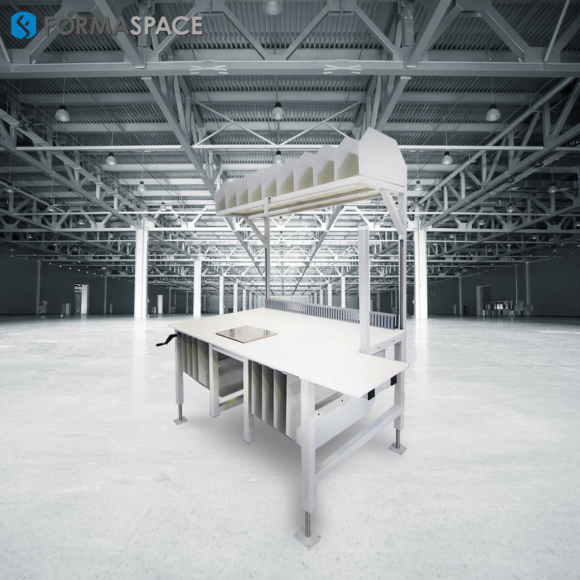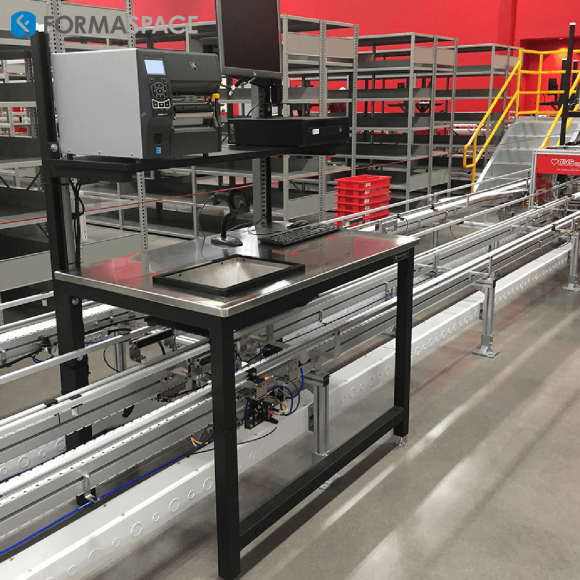2022 was a remarkable year for cargo shipping.
While the news media highlighted the Chinese government’s continued aggressive Covid lockdowns through most of 2022, China still managed to book a record trade surplus with the USA, rising 7% to a new high of $3.59 trillion in 2022.
Despite setting new records, the go-go pace of container imports crashed at the end of 2022, causing cargo shipping rates to fall through the floor – with 40-foot container rates from Shanghai to Los Angeles dropping from $11,197 in January 2022 to only $2,262 by November 2022.
Given these recent extremes in the market, what can we expect to see in cargo shipping logistics in 2023?

Container Import Volumes Rose Dramatically in Q3 2020 and Stayed High for Nearly Two Years, Until Dropping Back to 2019 Pre-Pandemic Levels in Q4 2022
To understand what is going on with cargo shipping, we need to examine the run-up of cargo imports that started in the third quarter of 2020.
After a sharp drop at the onset of the pandemic in the spring of 2020, the volume of cargo imports rocketed up during the third quarter of 2020 – remaining very high for two years.
Why the dramatic rise in shipping during the pandemic?

Analysts point to the huge demand for consumer goods as US households sought to upgrade their homes and home offices during the pandemic.
They point out that volumes could have been even higher during the lead-up to the 2021 holiday season, but volumes were hugely constrained by the shortages of cargo containers and shockingly high spot rates.
This brings us to 2022. Many of the goods intended for holiday sales in 2021 didn’t arrive until early 2022, much to the frustration of vendors.
There were also major concerns about the threat of strike actions on West Coast ports, so shippers pushed out even more containers in the first half of 2022 before the reported strike deadlines.
The boom times came to a dramatic end in the fourth quarter of 2022, as shipping volumes dropped 17.9% in November, taking them back to 2019 levels.

Containers Volume Through West Coast Ports Collapses as Cargo Traffic Moves to East Coast Ports through the Panama Canal
This dramatic double-digit drop in shipping volumes has not hit all US ports equally.
Shippers have been shifting away from the congested, strike-prone west coast ports, especially those in California, in favor of Gulf Coast and East Coast ports.
At their peak during the pandemic, the ports of Los Angeles and Long Beach handled 40% of the containers imported to the US, but this has since dropped to 30%.
Where is the traffic going instead?
The Port of Houston has been a beneficiary of this shift, with container volume growing 18% during the first 10 months of 2022. But Houston has not been able to take full advantage of bigger Panamax class container ships traversing the new wider lanes of the Panama Canal; for that, it will have to wait until at least 2025 for the current 14.7-meter ship channel dredging project to be completed.
The Port of Savannah was quicker off the mark in dredging the Savannah River to receive Panamax class cargo ships. The port, which provides quick access to major customers up and down the East Coast (including the I-95 corridor, the Atlanta metro, the Boeing aircraft assembly plant in nearby Charleston, and major manufacturers such as BMW and Pirelli in the Greenberg/Spartanburg, SC area) set a record of 5.9 million Twenty Equipment Units (TEUs) in 2022.
Rates for Container Shipments Could Fall Further in 2023
As we mentioned at the beginning, cargo rates fell dramatically in 2022.
According to the Drewry Worldwide Container Index (WCI), prices for a forty-foot container (or Forty-Equipment Unit or FEU in industry parlance) from Shanghai to Los Angeles reached a peak of around $12,000 in the third quarter of 2021, dropping to only $2,262 by November 2022 (not far from their pre-pandemic rates).
What will happen in the balance of 2023?
The next important guidance will come this spring as US buyers firm up plans to import goods for the 2023 holiday season. “Buying Season” is also the time that many shippers negotiate renewals on their expiring contract rates.
Many analysts feel these contract shipping rates will remain at their current low rates or fall even further.
Depending on how this pans out, we might see a “new normal” in cargo shipping rates emerge from these contract negotiations.
Other factors, however, may drive down rates.

The new “Container Glut” Could Help Drive Down Cargo Rates
One reason that cargo shipping rates could be flat or trending downward is the number of new containers coming into the market.
Because there was such a shortage of containers during the height of the pandemic, shippers made massive orders for new containers – and these are expected to hit the market starting this year. Maritime Strategies International (MSI) analyst Daniel Richards forecasts the industry fleet will grow 7% in both 2023 and 2024, returning to average growth in 2025. However, if operators don’t scrap as many old containers as expected, these numbers could rise to 10%.
Is De-Globalization Having an Effect on International Cargo Shipping?
Other long-term changes could affect cargo shipping volumes and costs in the coming years.
One change is a realignment of trading partners away from China toward more “friendly” nations, such as Vietnam or Thailand.
Many manufacturers are also turning to re-shoring and near-shoring, by bringing back production to the US, Mexico, or Canada, respectively.
A recent survey of US manufacturing and transportation executives conducted by Deloitte indicates that respondents believe that 20% of Asian production will move to near-shore markets by 2025, rising to 40% in 2030.
Much attention is focused on renewed manufacturing activity based in Mexico.
The Wall Street Journal reports that after a drop during the pandemic, there has been a resurgence in manufacturing investment in Mexico, with $11.6 billion in new spending during the first nine months of 2022.
If these de-globalization predictions come to fruition, they create long-term downward pressure on cargo shipping volumes from Asia to the USA.

Formaspace is Your Partner for Efficient Logistics and Material Handling
If you can imagine it, we can build it, here at our factory headquarters in Austin, Texas.
Talk to your Formaspace Design Consultant today about how we can help you make your warehousing, distribution center, pick and packing, and material handling operations more efficient.











